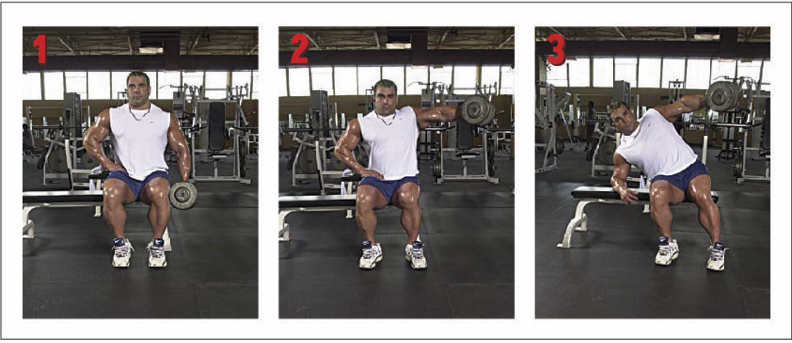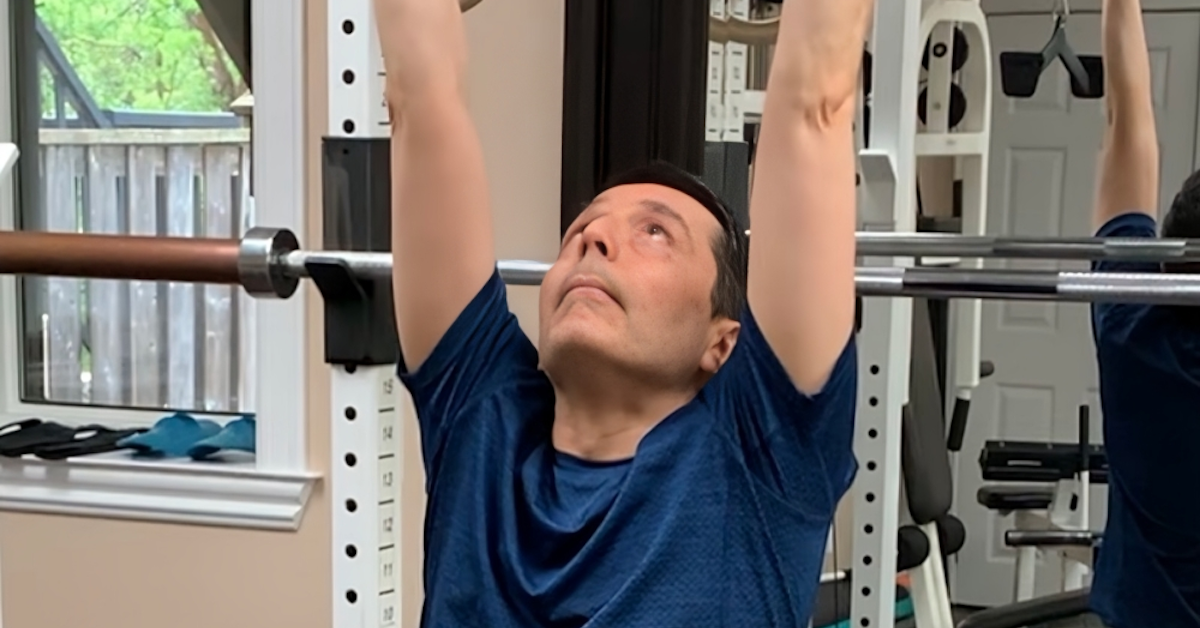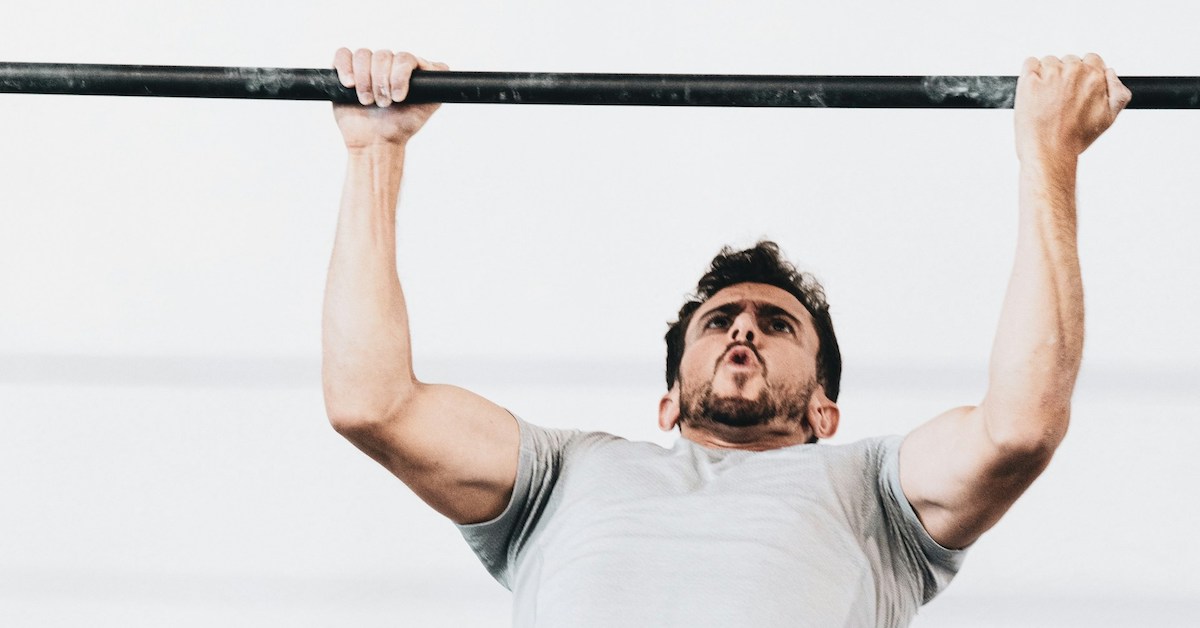If you’ve been doing lateral raises for years but your shoulders haven’t budged, science may be able to help. Muscle growth requires a sufficient amount of tension and time under tension. During a standard lateral raise, the maximum amount of tension occurs when the arm is straight out to the side, parallel to the ground—this is where the perpendicular distance from the joint axis of rotation is greatest.
Unfortunately, if the weight is heavy enough, you likely won’t be able to hold that position long enough to stimulate meaningful growth. But once again, science to the rescue… We know that you can hold more weight isometrically than you can lift concentrically, and you can lower more weight eccentrically than you can hold isometrically.
Put it all together, and the lateral raise should go like this:
- Sit at the edge of a bench.
- Raise a dumbbell out to the side until your arm is parallel to the ground.
- Keep your arm parallel to the ground, and lower your upper body away from the dumbbell toward the bench.
At the end, sit back up to the original position and repeat the process. Here’s what it looks like:

This variation of the lateral raise was proposed by the late exercise scientist Jerry Telle in his manual Beyond 2001. The body moves from an upright position to a side-lying position during the eccentric action to maintain optimal tension on the delts—what Telle termed “eccentric increase enhancement.” Essentially, you raise the dumbbell during the concentric phase while your body remains still, then lower your body during the eccentric phase while the dumbbell stays fixed.
It may feel awkward at first, but after a few reps, you’ll get the hang of it. Give it a shot!

Target Your Rear Delts Like Never Before
If you’ve struggled to feel your rear delts working—or to fill in that rear delt gap—this variation of the bent-over

Leo’s Chin-Up Journey (Day 1): From Zero to Hero
Can’t Do a Chin-Up? Neither Could Leo… But That’s About to Change. Leo started training with me back in September.

Why Your Chin-Up Grip Could Be Hurting You
For years we’ve been told to avoid behind-the-neck pulldowns and pull-ups. And for good reason — they place a tremendous
follow
Error: No feed with the ID 2 found.
Please go to the Instagram Feed settings page to create a feed.
